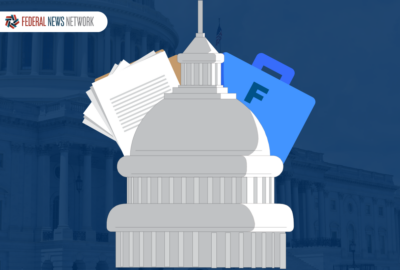Insight by Presidio Federal and NetApp
How agencies can build a multi-cloud strategy that emphasizes flexibility, scalability and cost-savings
Multi-cloud, if approached with foresight, can be the solution agencies need to deliver flexibility, scalability and cost-savings across their enterprise.
During the pandemic, federal agencies found themselves abandoning their previous reticence about cloud adoption and fully embracing cloud as a path to providing the kind of flexibility and capabilities required to enable their workforce to work from home. But they quickly found that a single cloud instance wasn’t enough. The cost of maintaining a single public cloud instance turned out to be unexpectedly high. Few — if any — public cloud instances provided the security required to handle any one agency’s full suite of data, from unclassified to data containing personally identifiable information, from healthcare data to controlled unclassified information. And many agencies have data that has to remain on premise, often because of its national security implications.
Because of these considerations, a multi-cloud strategy rapidly became the go-to solution for federal agencies looking to make the most of their cloud investments.
But that raised its own set of challenges: Which cloud is best for which data? What if one cloud environment is cheaper or more secure for data storage, while another is easier to scale? How can data, applications and workloads easily be moved from one environment to another? And how to manage it all?
The right infrastructure
The key, as many agencies have found, is investing in infrastructure that includes a uniform management platform that’s easy to manage, provides consistent performance, and supports containers.
Hyper Converged Infrastructure (HCI) began emerging as far back as 2020 as a key multi-cloud management environment, providing the flexibility to connect on-premises, public cloud, private cloud and edge environments, while maintaining uniformity and consistency in management across the board. That eliminates cloud silos while remaining vendor-agnostic, enables full mobility of data and workloads between environments without reformatting, and supports containerization.
That dynamic allows agencies to better manage costs, services and security across all their platforms in a single place.
Achieving cost savings through multi-cloud
For one thing, consistency across environments makes it easier for IT professionals to operate and manage them. Built-in automation also reduces the amount of time federal employees spend doing time-consuming, routine manual tasks. That leads to significant savings in labor costs. In addition, the simplicity of training on a single platform relative to multiple platforms makes training and upskilling easier and less costly. That’s imperative, as federal agencies face technological skill gaps in their own workforces, and stiff competition for talent with the private sector.
Meanwhile, the flexibility to choose where data is deployed, or which environment to scale in, allows agencies to maximize the efficiency of their cloud spend. It also helps agencies reduce their overall cloud footprint, saving even more money.
Achieving flexibility through multi-cloud
One key way HCI enables that flexibility is through the support of containers like Docker. Containers combine software and dependencies into a single unit that can then be moved and plugged into different environments, making it turnkey to deploy and move applications and workloads among multiple environments.
That also makes it easier for developers to deploy and update applications, reducing the amount of downtime agencies face, keeping essential services online even while making them more secure and improving the customer experience for constituents.
Containers also make it easier for developers to reuse code, making them more efficient. This not only allows them to deploy to production faster, but also yields cybersecurity benefits: Cyber defenses can be built, shored up and deployed much faster in defense of agency systems and data, saving crucial seconds that can mean the difference between secure data and a massive breach. And part of what makes that possible is the real time visibility into every environment granted by HCI, allowing cybersecurity professionals to look across the entire enterprise from a single pane of glass. It also allows them to maintain consistent security protocols and compliance across the entire enterprise, rather than setting individualized security protocols on each environment.
Managing multi-cloud
The same is true for the development process — different cloud environments usually have different APIs for both infrastructure and other services. By establishing a single management platform to connect and oversee all environments across the enterprise, agencies also enable a single platform team to specialize in the infrastructure. That means application developers don’t have to deal with the complexity of multi-cloud environments.
But these platform teams need to plan from the beginning to achieve an enterprise scale. That doesn’t mean they need the capacity to operate at that scale immediately, but that should be the goal from the start. Otherwise these teams risk thinking too small at the beginning, making more work for themselves down the road that can be not only a distraction from more valuable work they could be doing instead, but also disruptive to users and constituents. They also need to take a user-centric approach, focusing not only on the functionality of the tools but on the ease of user adoption.
Multi-cloud strategies, if approached with foresight and intentionality, can be the solution agencies need to deliver flexibility, scalability and cost savings across their entire enterprise.
Learn more about how Presidio Federal and NetApp serve as strategic partners to support your multi-cloud journey.
Copyright © 2025 Federal News Network. All rights reserved. This website is not intended for users located within the European Economic Area.





